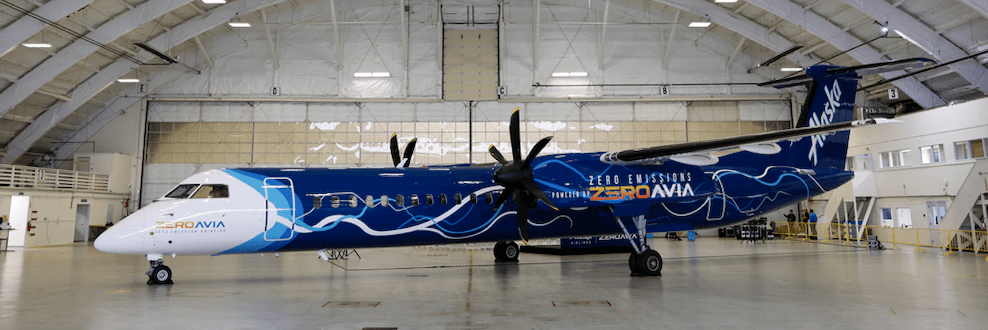On May 1, 2023, Alaska Airlines presented ZeroAvia with a Dash 8 Q400 regional aircraft that will be equipped with a hydrogen-electric propulsion system in an effort to expand the scope and applicability of zero-emission flight technology. The 76-seat Q400 will be developed by ZeroAvia.
Alaska Airlines partners with ZeroAvia
Alaska Airlines on May 1 introduced ZeroAvia to a Dash 8 Q400 regional jet that will be equipped with a hydrogen-electric propulsion system in an effort to expand the reach and applicability of zero-emission flight technology. The 76-seat Q400 will be developed by ZeroAvia. When Horizon Air, Alaska Airlines' regional airline, retired its Q400 fleet, it set aside one of the aircraft for research and development to advance zero-emissions technology in aviation. The aircraft was repainted with a special livery to highlight the innovative mission of this partnership.
A Dash 8 with hydrogen-electric power
ZeroAvia also showcased its revolutionary multi-megawatt modular electric motor system in a 1.8 MW prototype configuration at the event - demonstrated with a propeller ride aboard ZeroAvia's 15-ton HyperTruck test bed. Combined with higher temperature PEM fuel cells and advanced power electronics - both of which ZeroAvia is developing in-house - the advanced electric motor technology is one of the three key elements to achieve commercially relevant hydrogen fuel cell engines for larger aircraft.
A test flight next year
The alignment of ZeroAvia's powertrain with the Dash 8-400 airframe will create a commercially viable zero-emission aircraft with fuel cell engine technology five times more powerful than what has been demonstrated to date. "The launch of this program puts us on track for a test flight next year and accelerates our progress toward the future of zero-emission flight for Alaska Airlines and the world," said Val Miftakhov, ZeroAvia founder and CEO.


ZA2000 after ZA600 on Dornier Do-228
The recent ZeroAvia advances not only pave the way for potential flight of the Q400, also known as the Dash 8-400, but also demonstrate rapid progress toward certification of the ZA2000 propulsion system. ZeroAvia already has a proven track record of world-first flight testing. In January, ZeroAvia flew a 19-seat aircraft equipped with its prototype 600 kW hydrogen electric engine (ZA600). The flight follows the demonstration of a 250 kW system in 2020, which was then the largest aircraft in the world to use a new emission-free power source.
PEM Fuel Cells
ZeroAvia's hydrogen-electric engine uses fuel cells to generate electricity from hydrogen, before using that electricity to power the electric motors that turn the aircraft's propellers. The certifiable ZA2000 system will include ZeroAvia's high-temperature PEM fuel cells and liquid hydrogen storage, which are essential to provide the energy density needed for commercial operation of large regional turboprop aircraft. The company has already established an engineering partnership with De Havilland of Canada, the original manufacturer of the Dash 8 aircraft family, to enable the exchange of data and expertise with the airframe.
Découvrez cet article sur Air&Cosmos

